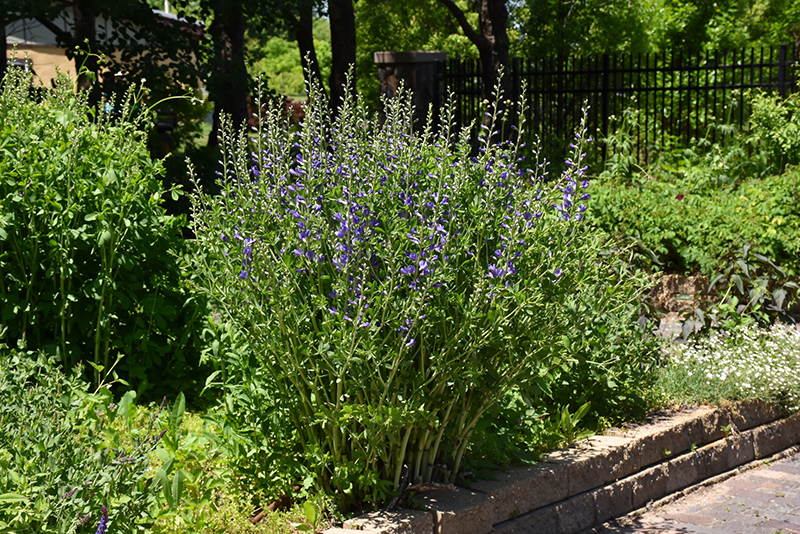Purple Smoke False Indigo
Baptisia 'Purple Smoke'
Plant Height: 3 feet
Flower Height: 4 feet
Spread: 3 feet
Sunlight:
![]()
![]()
Hardiness Zone: 4a
Other Names: False Indigo
Description:
Spectacular violet spikes of pea-flowers rise from blue-green foliage in early summer; use this plant for its outstanding display of vertical flowers as an accent in the garden
Pollinator Friendly Plants
Have your garden come alive and buzzing with activity with these pollinator friendly plant options. Look for plants tagged with this promotion title: "Pollinator Friendly Plants" to add to your garden. You can also look for pollinator plants by scrolling to the bottom of each plant page and looking for the "butterfly" symbol. Click "Learn more about this promotion!" for some more inspiration and articles from one of our growers, Monrovia!
Learn more about this promotion!
Ornamental Features
Purple Smoke False Indigo has masses of beautiful spikes of violet pea-like flowers rising above the foliage from early to late spring, which are most effective when planted in groupings. The flowers are excellent for cutting. Its oval leaves remain bluish-green in color throughout the season. The fruits are showy black pods displayed in late summer.
Landscape Attributes
Purple Smoke False Indigo is an herbaceous perennial with an upright spreading habit of growth. Its medium texture blends into the garden, but can always be balanced by a couple of finer or coarser plants for an effective composition.
This is a relatively low maintenance plant, and is best cleaned up in early spring before it resumes active growth for the season. It is a good choice for attracting bees and butterflies to your yard. It has no significant negative characteristics.
Purple Smoke False Indigo is recommended for the following landscape applications;
- Mass Planting
- General Garden Use
Planting & Growing
Purple Smoke False Indigo will grow to be about 3 feet tall at maturity extending to 4 feet tall with the flowers, with a spread of 3 feet. It tends to be leggy, with a typical clearance of 1 foot from the ground, and should be underplanted with lower-growing perennials. It grows at a slow rate, and under ideal conditions can be expected to live for approximately 25 years. As an herbaceous perennial, this plant will usually die back to the crown each winter, and will regrow from the base each spring. Be careful not to disturb the crown in late winter when it may not be readily seen!
This plant does best in full sun to partial shade. It is very adaptable to both dry and moist growing conditions, but will not tolerate any standing water. It is considered to be drought-tolerant, and thus makes an ideal choice for a low-water garden or xeriscape application. It is not particular as to soil type, but has a definite preference for alkaline soils, and is able to handle environmental salt. It is somewhat tolerant of urban pollution. This particular variety is an interspecific hybrid. It can be propagated by division; however, as a cultivated variety, be aware that it may be subject to certain restrictions or prohibitions on propagation.


